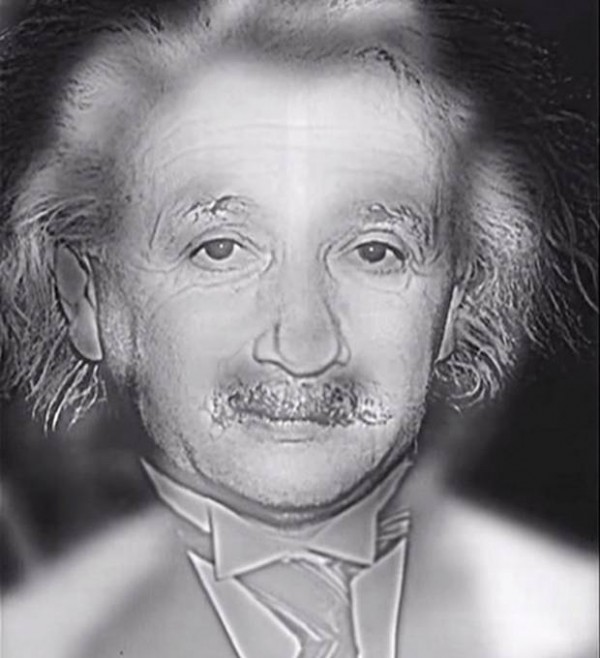[Video] Einstein or Monroe? An Eyesight Test Reveals How Bad or Good Your Eyes Are
| Marco Foronda | | Apr 03, 2015 10:27 PM EDT |
(Photo : Aude Oliva/MIT) Two geniuses, one in physics, the other on celluloid.
A recent video by AsapScience exhibits the effect of an optical illusion created a few years ago by neuroscientists at the Massachusetts Institute of Technology (MIT).
The illusion offers clues as to how our brains process details in images or scenes.
An image produced by Dr. Aude Oliva from MIT may provide an answer. The person you see could determine if you need glasses - or stronger glasses.
Like Us on Facebook
The "Marilyn Einstein" video appears first as a small, blurry picture of American actress and screen siren, Marilyn Monroe. But as the image zooms in, it transforms into a photo of physicist Albert Einstein.
Monroe's features are blurry and indistinct, while Einstein's are finely drawn. Those fine details are only visible at closer distances, so the image appears to change as it zooms in (or as the viewer moves closer to it).
The optical illusion helps in pointing out vision problems. The MIT team conducted a series of experiments in which they showed participants the hybrid image for different lengths of time.
People that might need glasses are often unable to pick out the fine details of Einstein's face, and are left seeing an image of Monroe.
The image also points out a quirk in how the human brain processes visual information. Dr. Oliva said these images not only reveal vision problems, but can also shed light on how the brain processes information.
Human brains prioritize different details within an image or scene. If we see a picture only very briefly, we're left with "low spatial resolution" information and the overall shape of what we saw.
If we see that same picture for a slightly longer period of time, we're able to pick up on finer details. The MIT team believes our brain processes low spatial resolution information first, before it moves on to details.
The experiment can be used by companies that want to change the way their advertisements or logos appear at different sizes or distances from potential customers.
Manufacturers might also be able to use the research to mask text or other information that must be printed on their devices so that the text is only visible from close up.
TagsEinstein or Monroe? An Eyesight Test Reveals How Bad or Good Your Eyes Are, Albert Einstein, Marilyn Monroe, Eyesight, Eyesight test, Eyes, eyeglasses, Glasses
©2015 Chinatopix All rights reserved. Do not reproduce without permission
EDITOR'S PICKS
-

Did the Trump administration just announce plans for a trade war with ‘hostile’ China and Russia?
-

US Senate passes Taiwan travel bill slammed by China
-

As Yan Sihong’s family grieves, here are other Chinese students who went missing abroad. Some have never been found
-

Beijing blasts Western critics who ‘smear China’ with the term sharp power
-

China Envoy Seeks to Defuse Tensions With U.S. as a Trade War Brews
-

Singapore's Deputy PM Provides Bitcoin Vote of Confidence Amid China's Blanket Bans
-

China warns investors over risks in overseas virtual currency trading
-

Chinese government most trustworthy: survey
-

Kashima Antlers On Course For Back-To-Back Titles
MOST POPULAR
LATEST NEWS
Zhou Yongkang: China's Former Security Chief Sentenced to Life in Prison

China's former Chief of the Ministry of Public Security, Zhou Yongkang, has been given a life sentence after he was found guilty of abusing his office, bribery and deliberately ... Full Article
TRENDING STORY

China Pork Prices Expected to Stabilize As The Supplies Recover

Elephone P9000 Smartphone is now on Sale on Amazon India

There's a Big Chance Cliffhangers Won't Still Be Resolved When Grey's Anatomy Season 13 Returns

Supreme Court Ruled on Samsung vs Apple Dispute for Patent Infringement

Microsoft Surface Pro 5 Rumors and Release Date: What is the Latest?










